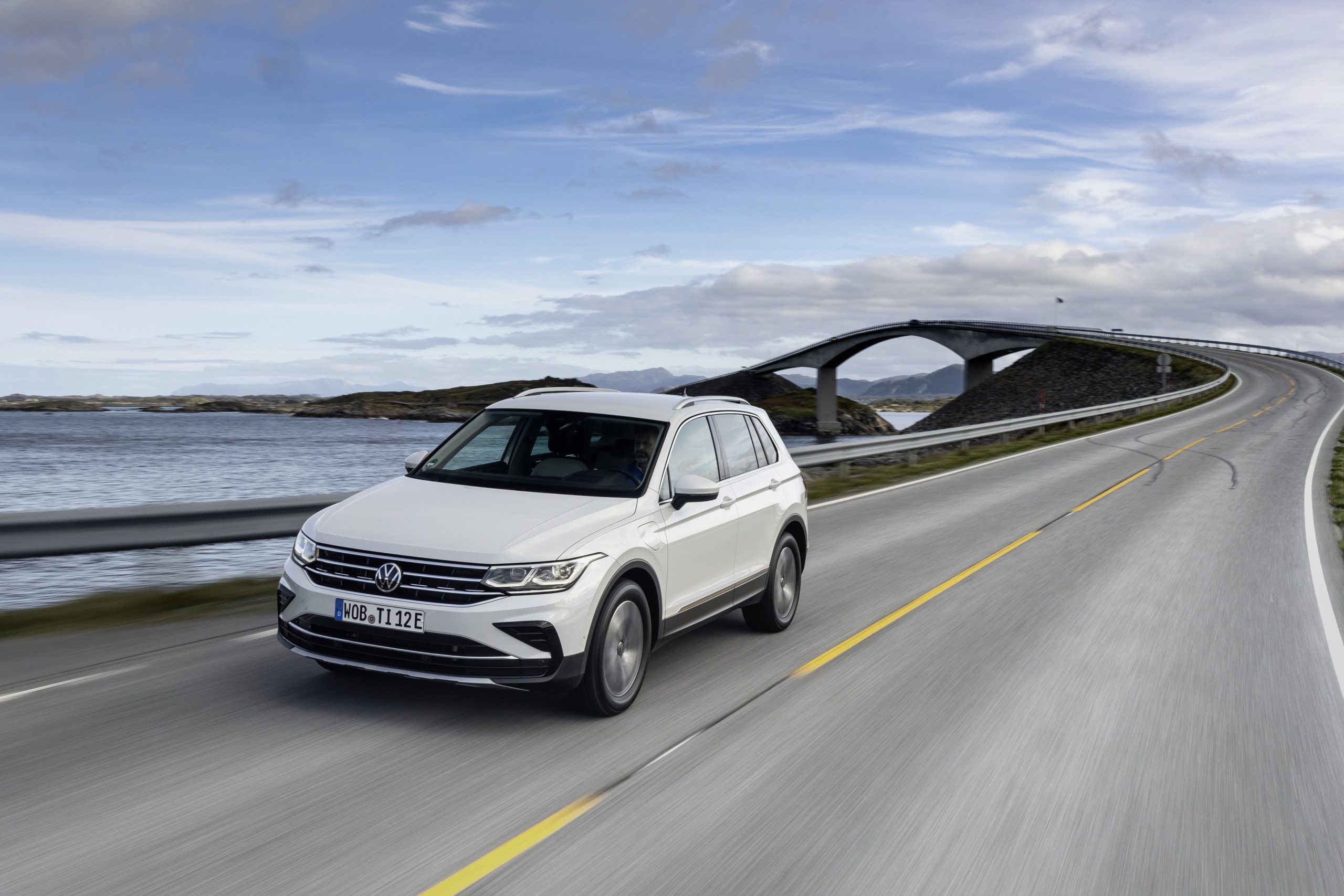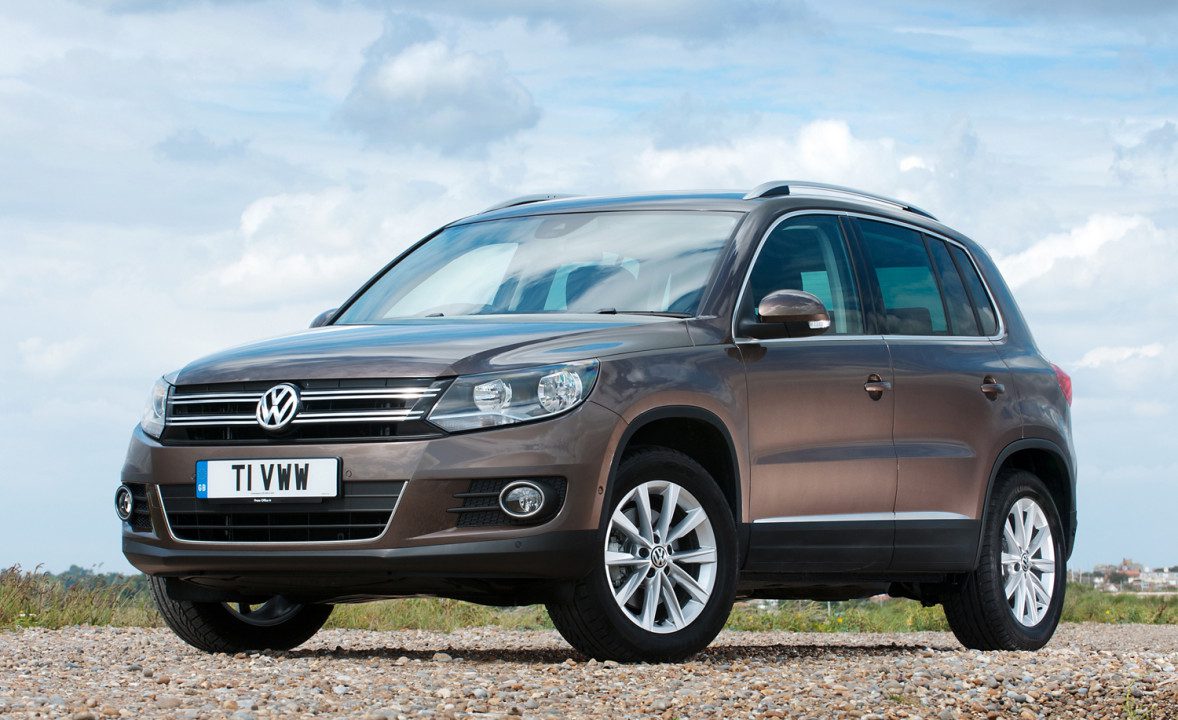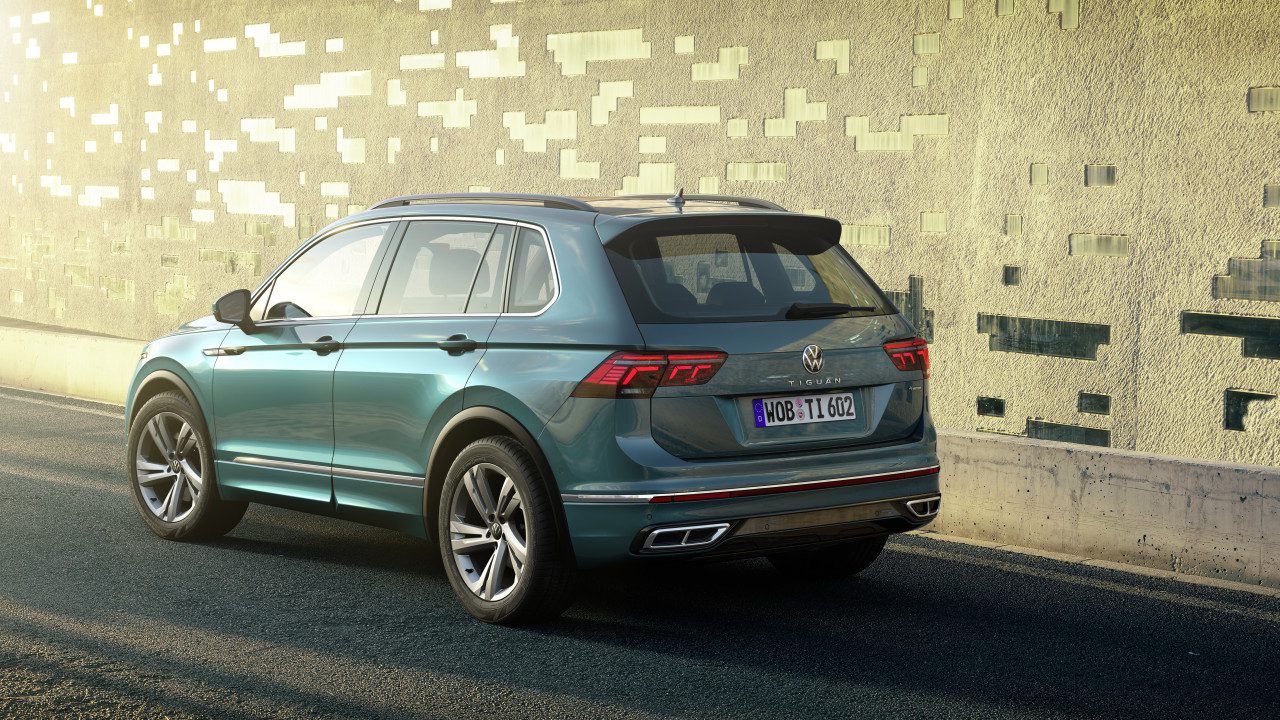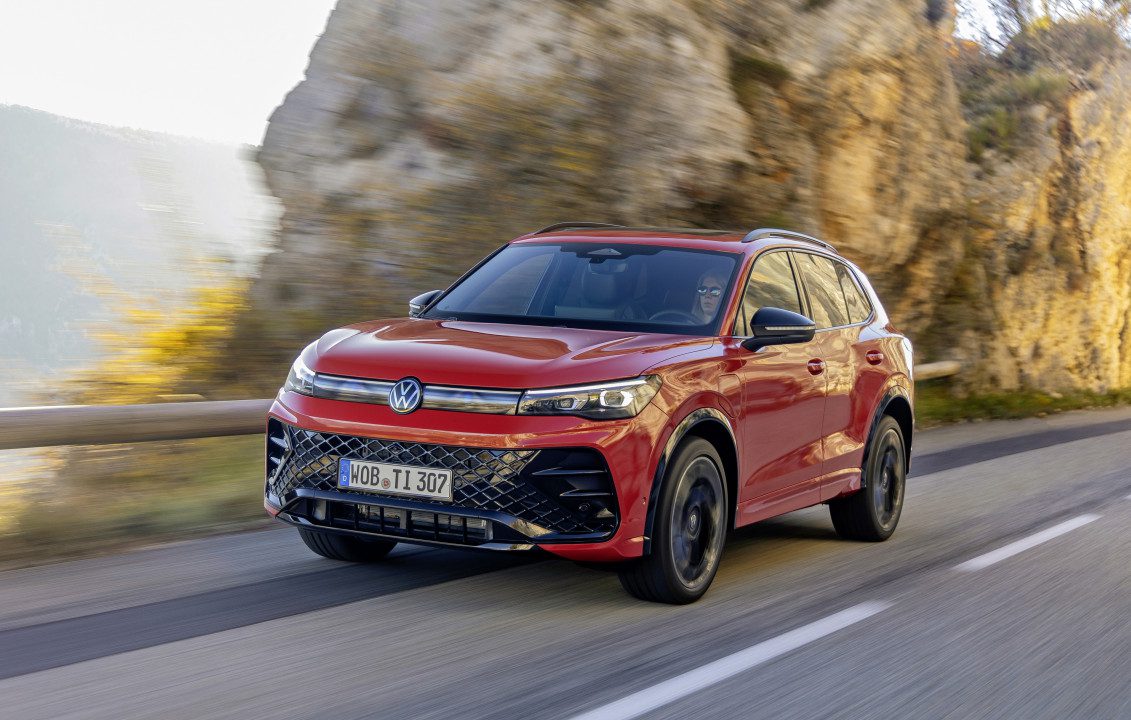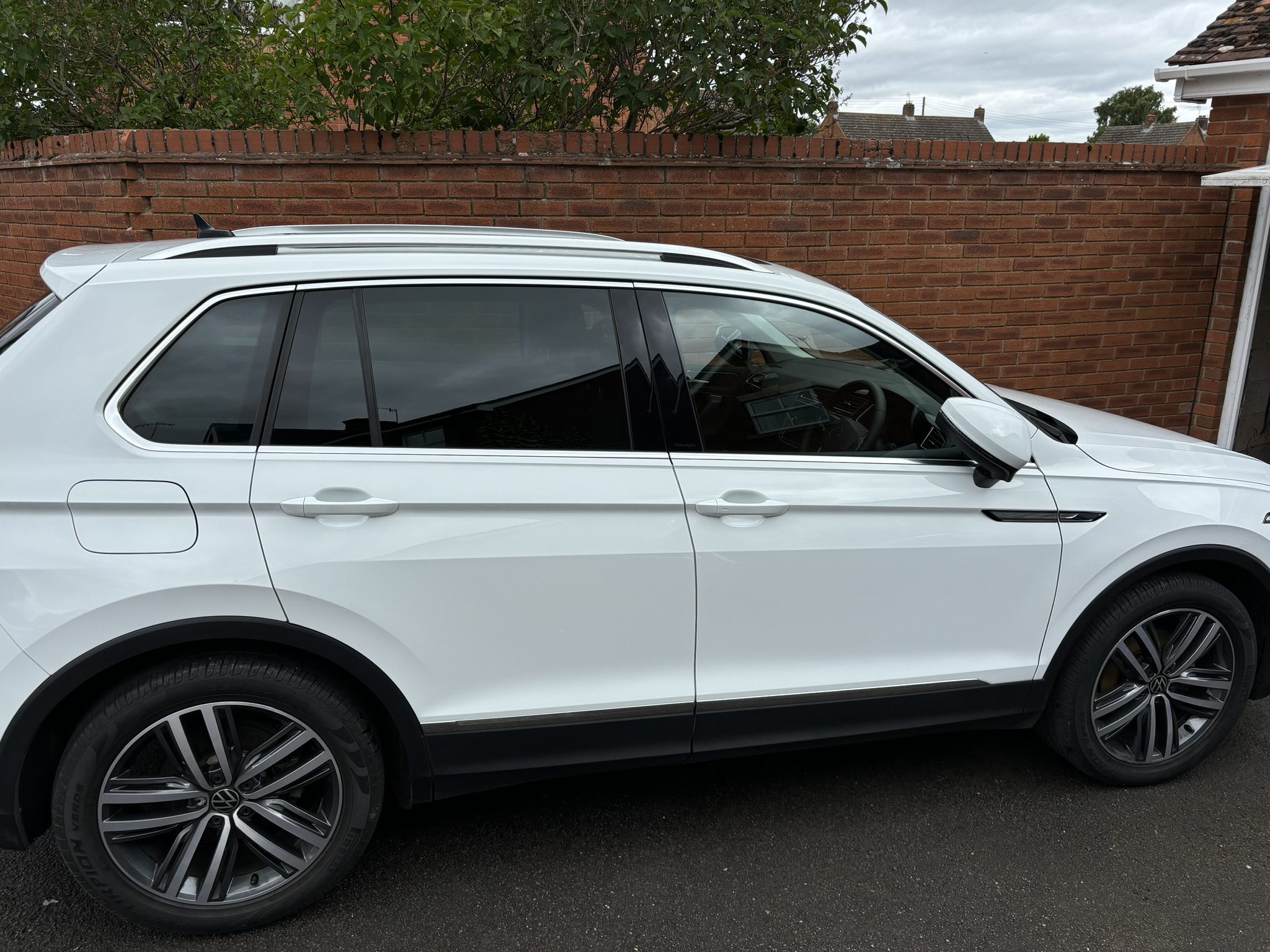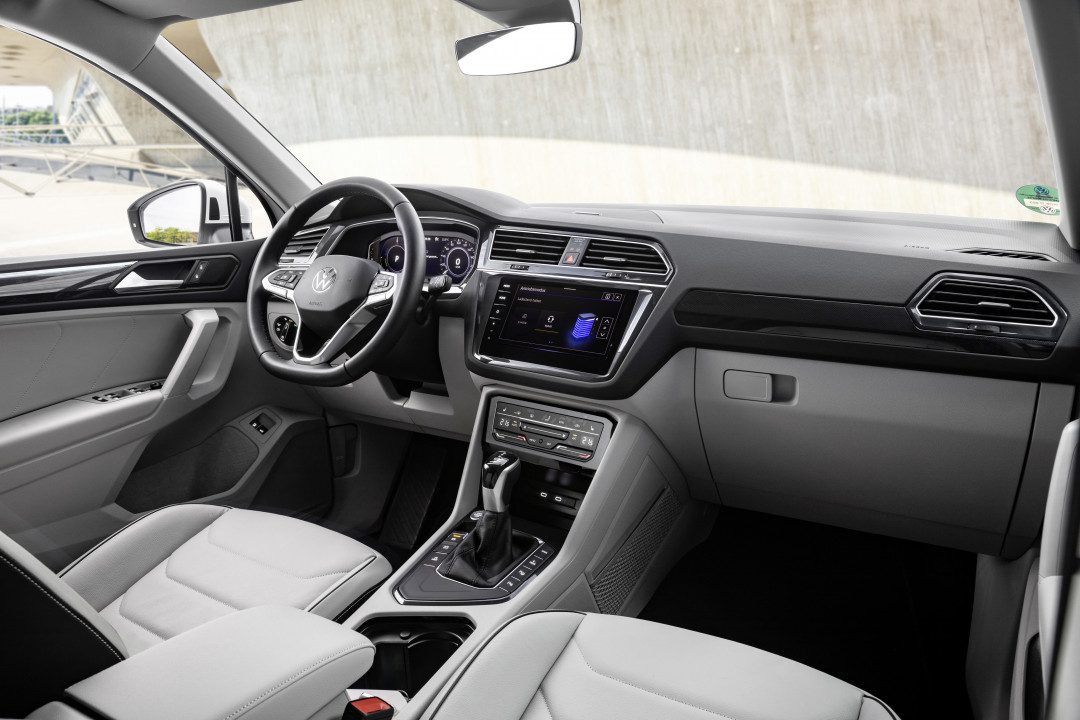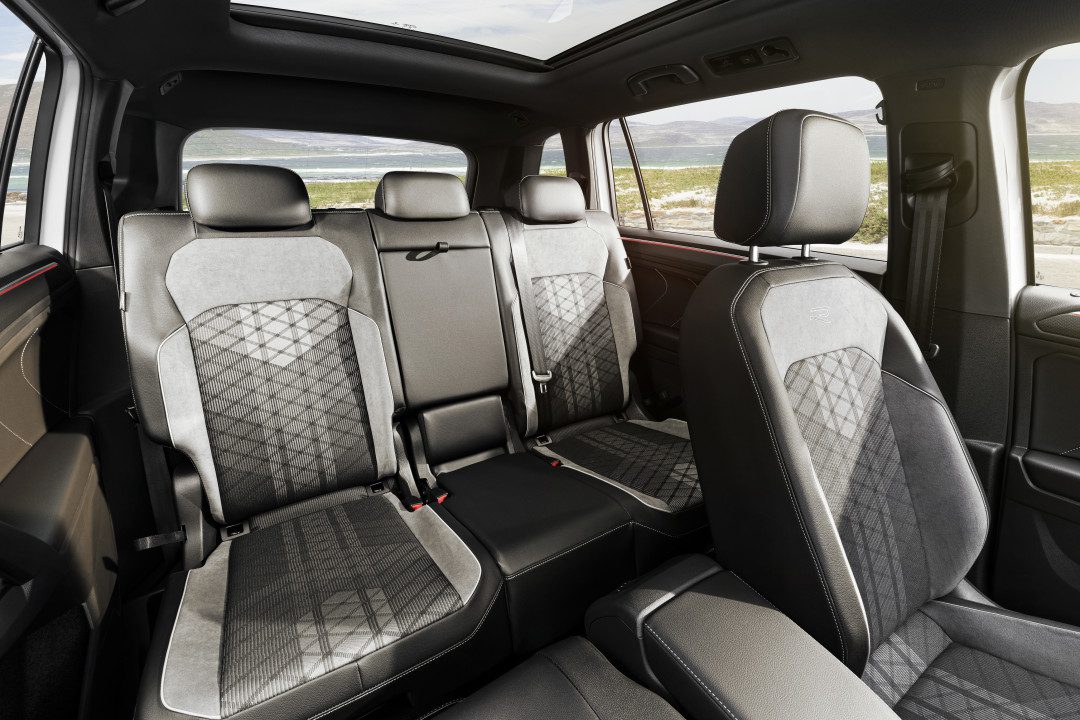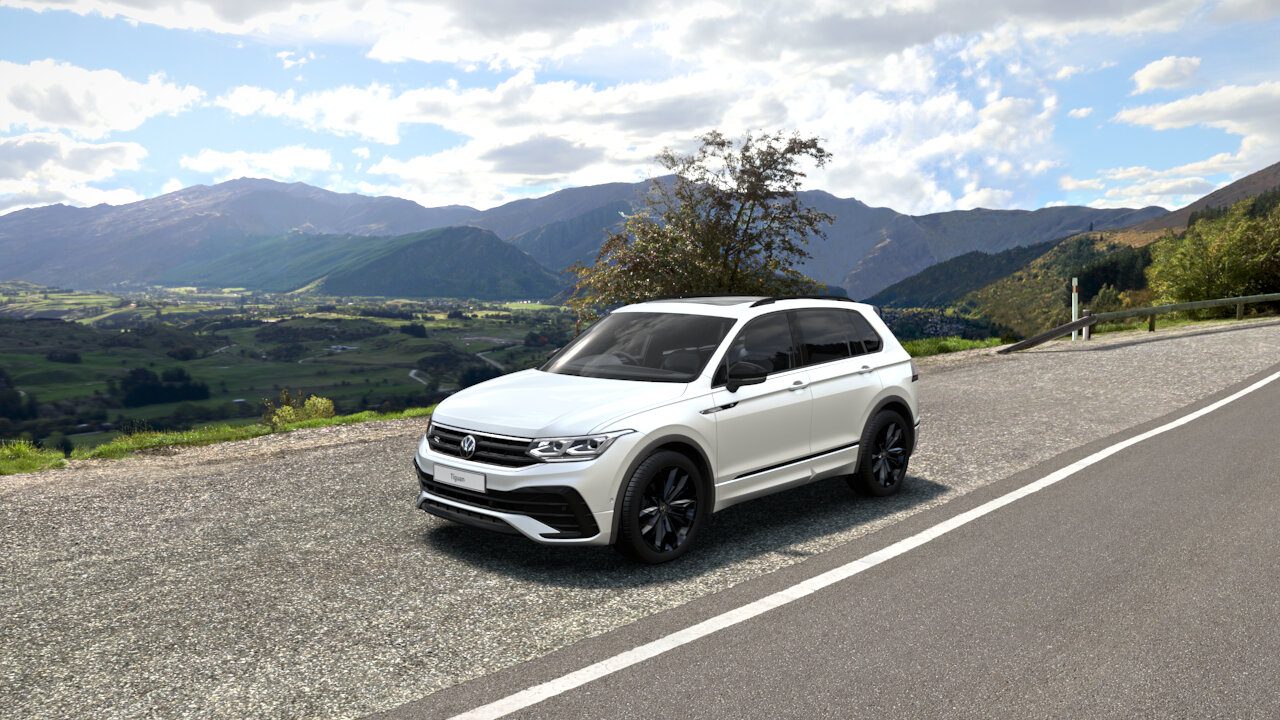Tested model: 2021 VW Tiguan Elegance 1.5TSI
What is it?
VW’s Tiguan was first introduced in 2007, sharing a platform with VW’s Passat and Sharan, Škoda’s Superb and SEAT’s Alhambra. Its targeted a corner of the market mainly dominated by BMW’s X3 and X5, as well as Mercedes-Benz’s B-Class, and later, the Audi Q5. The first-generation was facelifted in 2012, and eventually replaced in 2016. The next iteration of the Tiguan was, in 2020, also facelifted, and went up against BMW’s SUVs, but also the Mercedes GLC and Audi Q5. This generation sold incredibly well: six million units had been manufactured by the Spring of 2020, with 910,926 of these in 2019 alone. In September 2023, the production version of the third-generation Tiguan was released, and began rolling off the conveyer belts earlier this year. The model I tested is the 2021 Tiguan Elegance – the post facelift car, with a focus on luxury over sport performance.
Exterior Looks
The second-generation Tiguan is an angular, modern-looking car. Various lines on the bonnet and sides give it a surprisingly aggressive look, but the rounded, wide-grilled front end make the car look relatively… for want of a better word, friendly. The chrome trim around the edges of the car on the Elegance specs (and the R-Line and R specs above it) gives the Tiguan an up-market finish, but seems to attract dirt, smears and seems to be the first thing to break if the car has a bump. Similarly, the chrome roof-bars add to the overall look of the car; if anything, without the roof-bars, the car looks pretty bare. In terms of the rest of the VW range, I’d argue that the Tiguan fits nicely into the slightly cheaper family of cars, placing itself as the (more) affordable equivalent to the Touareg, along with the Polo (as opposed to the Golf) and the T-Cross (as opposed to the T-Roc); all of them share similar looks, being slightly less-rounded than their counterparts. All in all, the Tiguan’s a decent looking car.
Interior
In my opinion, it’s the Tiguan’s interior which sets it aside from immediate market rivals. On the tested spec, the Elegance, the seats come either with Vienna Leather (in cream or black) or cloth (in either black/grey or cream/light grey). The tested model has the cloth option, although I have sat in cars with the Vienna Leather. Personally, I preferred the former over the latter, surprising myself – after a few months of constant use, the leather begins to sag and starts to look quite tired, whereas the cloth remains new-looking (the tested model is a 2021 car and the seats still look factory-standard). Moreover, the cloth is pretty easy to clean – damp cloth for marks or a vacuum cleaner for bits/crumbs etc. Despite VW group having a reputation of laggy-ness, I’ve found the infotainment system quick and easy to use (although I am used to that of a 2016 Nissan X-Trail). The Apple CarPlay works very well, and the settings pages are particularly easy to navigate. The separate panel for climate controls is, for me, more favourable than having it imbedded in the main screen. As ever, though, a few complaints: firstly, it is not at all obvious how to input a postcode into the sat-nav, as it’s not an option on any of the main navigation screens. There is a way to do it (I can’t quite remember how), but if you are going to buy one of these cars, it’s definitely worth asking the dealership to show you how it works. Hopefully this has been changed on the 2024-MY car. Secondly, signing-in to the car with the mobile-account pairing is a proper faff. There’s QR Codes to scan, then you have to wait for it to talk to your phone, then, on the off-chance that works, there’s more password-inputting to do on the car’s screen. There’s a chance I could’ve been over-complicating it, but you should definitely get the dealer to show you how this works first. On the positive, there’s loads of leg-room in the back (I’m 6’0 and am perfectly comfortable there), the boot is relatively spacious (615L with rear seats up compared to 520L in the Audi Q5), and, perhaps the best feature, the Elegance spec comes with a sliding and tilting panoramic sunroof which spans the length of the seating area of the car. When paired with the light-coloured headlining, this gives the Tiguan a very light, spacious feel.
The Drive
The Elegance-spec can only be fitted with a 7-speed DSG gearbox, which comes equipped with four driving modes: Sport, Normal, Eco and Individual. None are particularly extreme – sport shifts later, eco shifts earlier, individual is customisable and normal does what it says on the tin. The Tiguan has a smooth ride, the petrol tested is not too noisy, although, in terms of fuel economy, I’d recommend sticking to Eco mode to get around 40mpg, as opposed to somewhere in the 20s, which you’d see in Sport. The suspension is relatively firm and it’s a generally comfortable ride. Acceleration from a junction is a bit sluggish, but once you get going it’s a pretty responsive car.
The Verdict
Full disclosure, my verdict is positive because we’ve already bought the car. It’s decent value for money (ours was between £25,000-£30,000 with fewer than 20,000 miles on the clock), and still comes with luxury features such as the panoramic roof. Plenty of space, and if you buy from a VW-approved dealer, comes with service and MOT plans, a warranty and a guarantee. You could pick up a second-generation Tiguan for between £7,000-£50,000, a facelift from about £15,000 and an Elegance-spec from £20,000. It’s a long-standing favourite from VW and should definitely be a consideration for a family car.
Would you think about a second-generation Tiguan for your next SUV?

